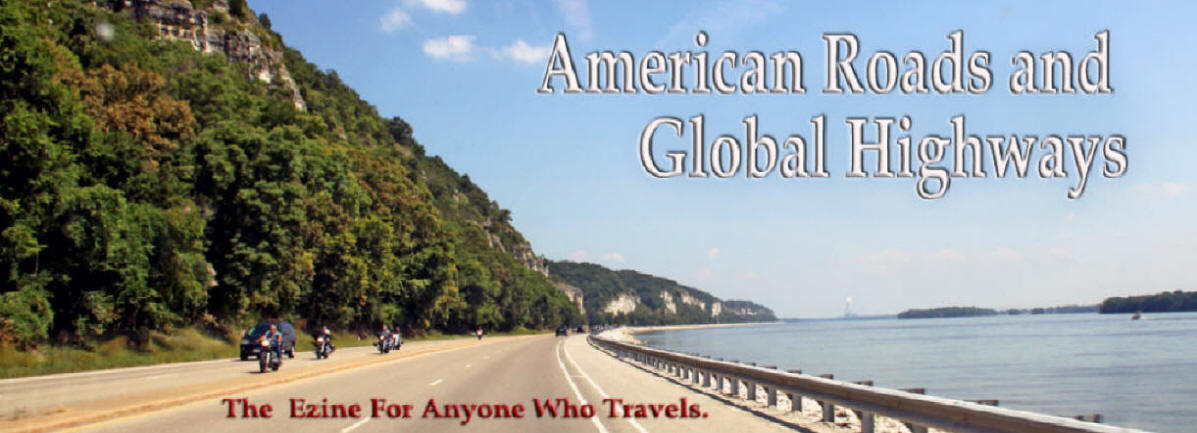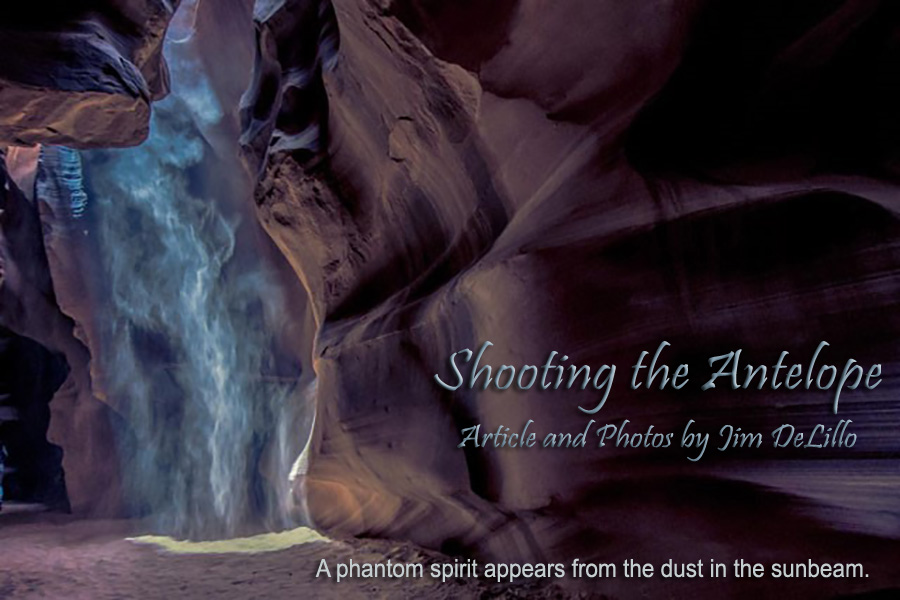
The slot canyons of Page, Arizona are
on Navajo lands. By law, only native Navajo can conduct business on
the property. This has resulted in several resident outfitters
running operations to visit the twisty, narrow, photogenic canyons.
It is strictly controlled by the Navajo Parks and Recreation
Department, which serves to protect the area from overuse and
preserve its history.
The slot canyons are known for their
sinewy constricted passages that are illuminated from the sun
shining in from above. The water and sand eroded passages snake well
below the surface grade and are accessible through cave-like
opening, some requiring ladders to enter.
There are many slot canyons in which
tours are offered. I spent 8-hours visiting four of them Owl, Snake,
Sheep, and the famous Upper Antelope Canyon. All have a similar
character, but each has a unique identity and offers a varied
experience.
Tours are offered for photographers
where tripods and DSLR are required to participate, and the general
tour where tripods and DSLRs are not allowed. They do allow small
point-and-shoot cameras and cellphones on the general tour.
Four-wheel drive or flatbed trucks are
used to reach the remote entrances via sand roads and dry washes. No
public traffic is allowed on the site. Wet weather turns the access
in a muddy mire and will cancel the tours.
[
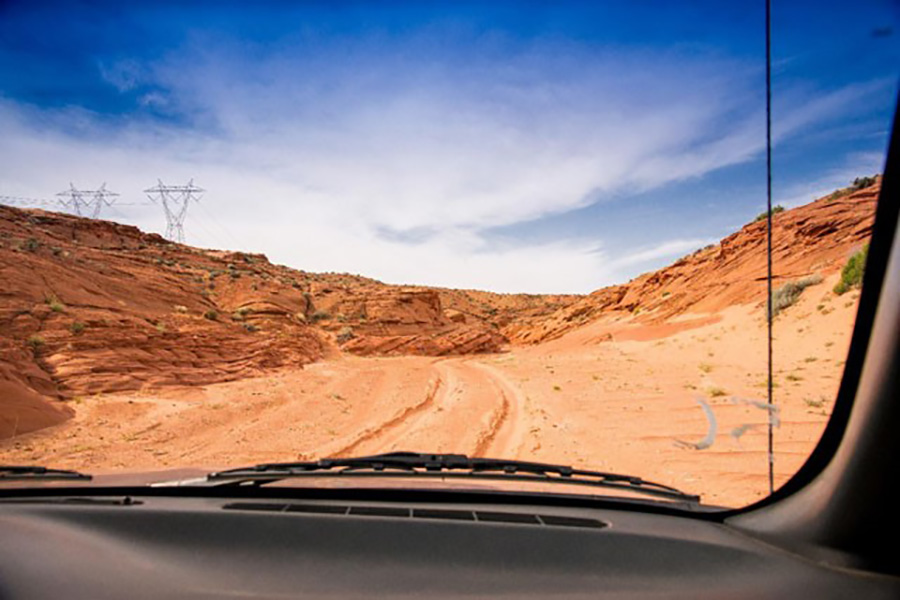
Four Wheel drive provides the
only transportation down the dry washes to the canyon's entrances.
At the cave opening, groups are
segregated, with the photography group given priority access and
special treatment. The guides bring the photo group past the others
and head immediately deep into the fissure.
The trips are timed to coincide with
the arrival of sunbeams at key strategic points in the cave. That's
why you see so many of the same pictures. As the sunbeams enter the
gaps in the ceiling, the guides position the photographers with
minutes to spare.
Then the guides help the phantoms to
appear by throwing handfuls of fine sand into the air. The light
hits the dust and falls to the ground. Allowing for slightly
different interpretations of the sunlit haze. These shafts of
illumination are the ghosts or phantoms which appear in so many
images.
At another location within the cavern,
sand is thrown over and atop a rock outcropping causing it to fall
and cascade as if it is a waterfall.
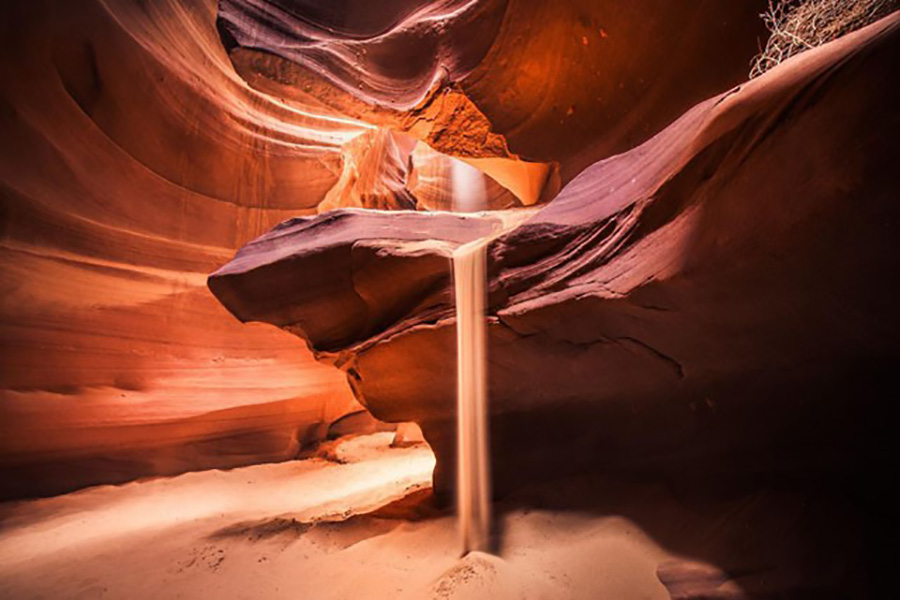 |
| Sand is thrown over and atop a
rock outcropping causing it to fall and cascade as if it is a
waterfall. |
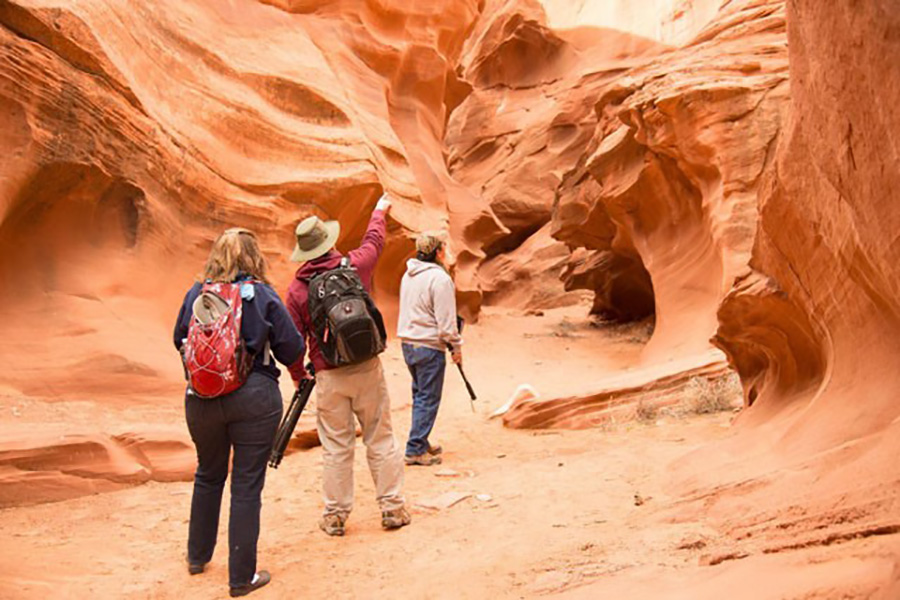 |
|
Hikers explore the canyon, looking for that perfect shot.
|
While walking to each location, the
guide gives tips on camera settings and how best to capture the
nature of the red sandstone ravine. At each photo opp, the general
group is held at bay and the photographers are directed on where to
set up their tripods for the "best" vantage point (like those Kodak
Photo Spots in Disney theme parks).
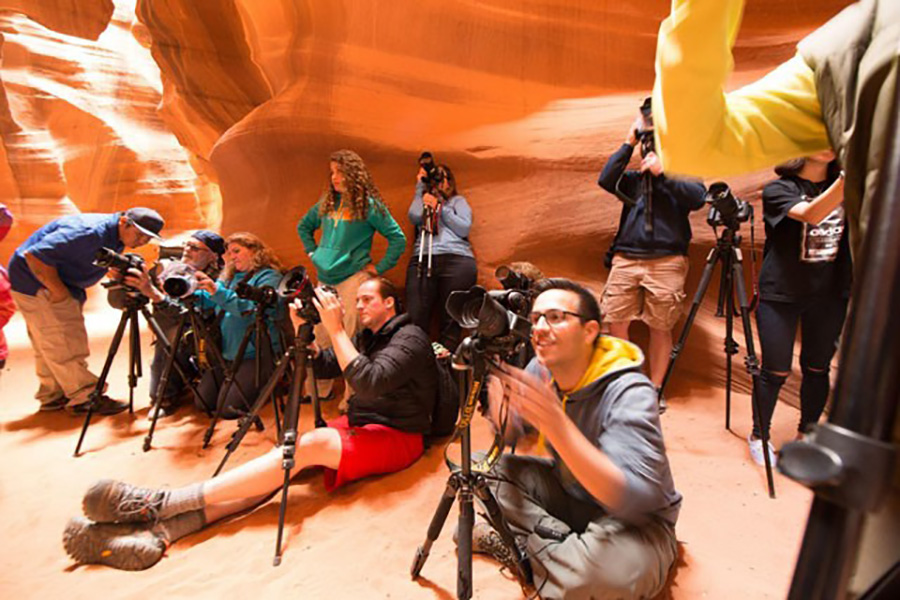 |
|
Photographers position
themselves and their tripods for the best angle to catch the
sunbeams. |
About the author:
Jim DeLillo is a travel and adventure photographer who specializes
in creating transporting imagery. You can connect with him and find
more of his work on his website, Instagram, Facebook,
and Twitter.
